Jetbeam RRT21 : Tactical flashlight review
Introduction Jetbeam RRT21
This thing is beautiful. I can’t stop saying it. And can’t stop playing with it.
My first impressions were very positive. It doesn’t only look good, it also feels very well in hand. No sharp edges or anything. A great Tactical flashlight in my opinion.
The reason for reviewing this flashlight is because of the MCR. MCR stands for Magnetic Control Ring. This is a common feature on the Sunwayman flashlight I have reviewed here as well like the Sunwayman V11R.
Don’t want to read the full review? Jump to the conclusion.
What’s inside the box:
- The Jetbeam RRT-21
- A small Clip
- 2 O-rings
- 1 extra boot
- A Lanyard
- Papers: Manual (English) and a warranty card? (in Chinese) and proof of authenticity (Chinese)
These things are quite normal for a flashlight to be included, so nothing noteworthy. But it is still better than some other flashlight manufacturers who don’t put any extra o-rings, a lanyard or rubber boots.

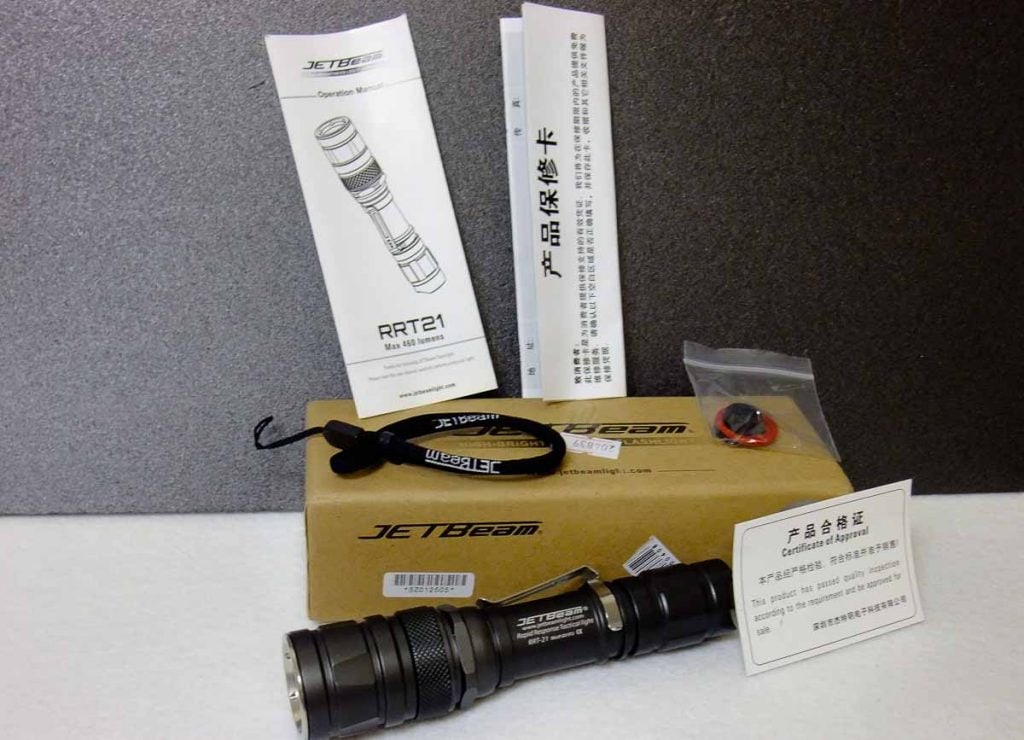
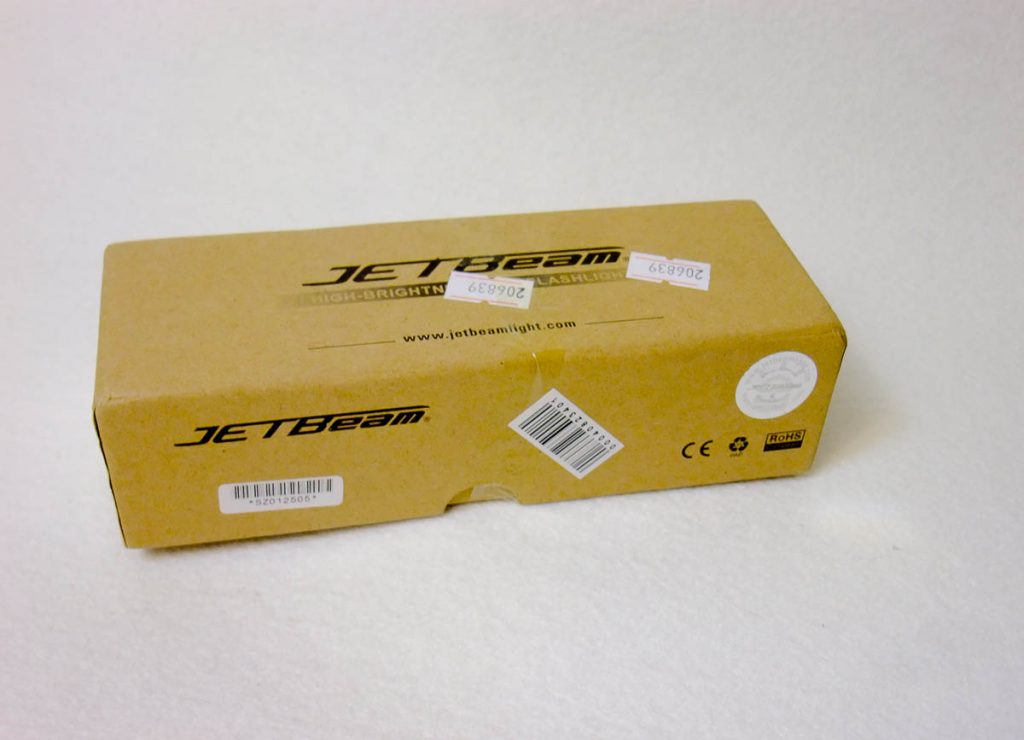
Anodizing and handling of the light
Jetbeam put quite some effort in shaping this litte beauty. There is no sharp edge or blemish to be found on its anodizing.
I have had quite a few lights, both in the budget segment as well as in the premium segment. This has been the nicest looking light I have had. And I have had probably more than 50 flashlights. This one is “king of the hill”.
Its nicer that any premium Sunwayman, Fenix, Nitcore or Eagletec. And way above any ultrafire/crapfire/housonfire light I have ever had or seen.. The RRT21 is super smooth, and can be classified as a real shelf queen.
Unfortuately that silk as smooth RRT21 has some downsides it`s grip.
There is almost no knurling on this flashlight. Except for the MCR.
Fortunately the belt clip can help to get some grip.
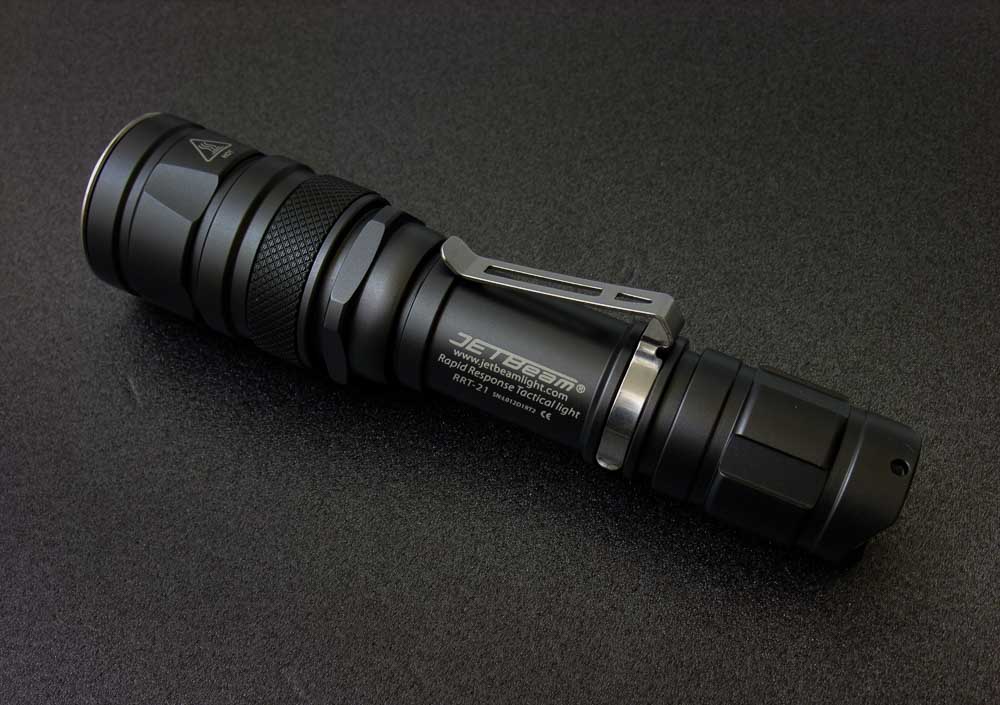
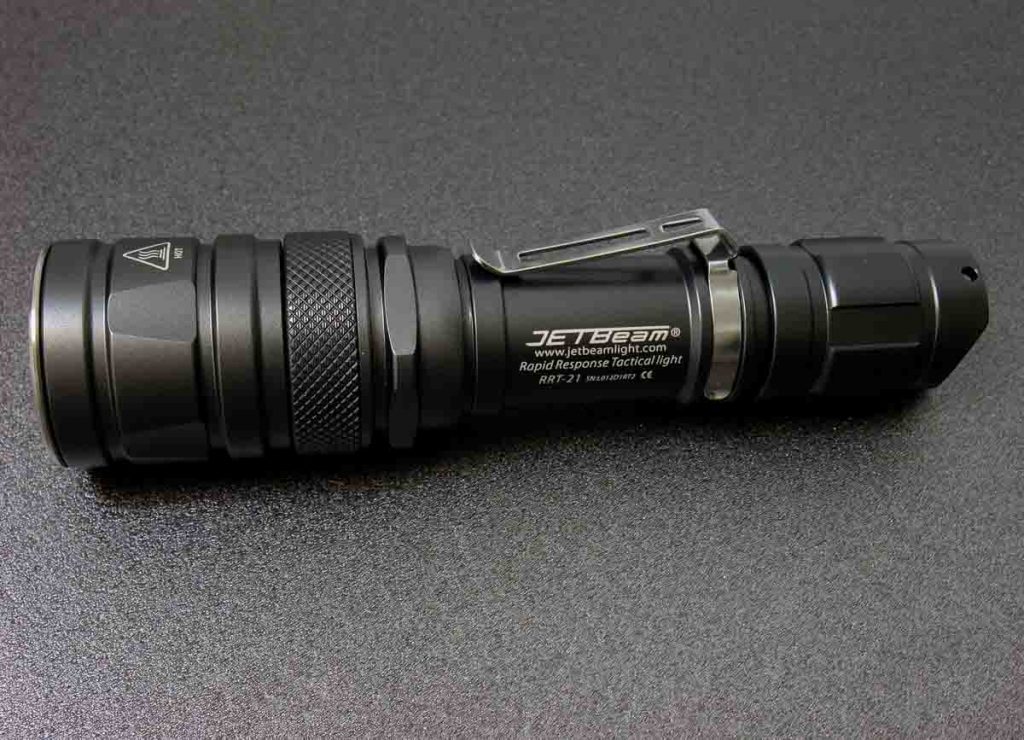
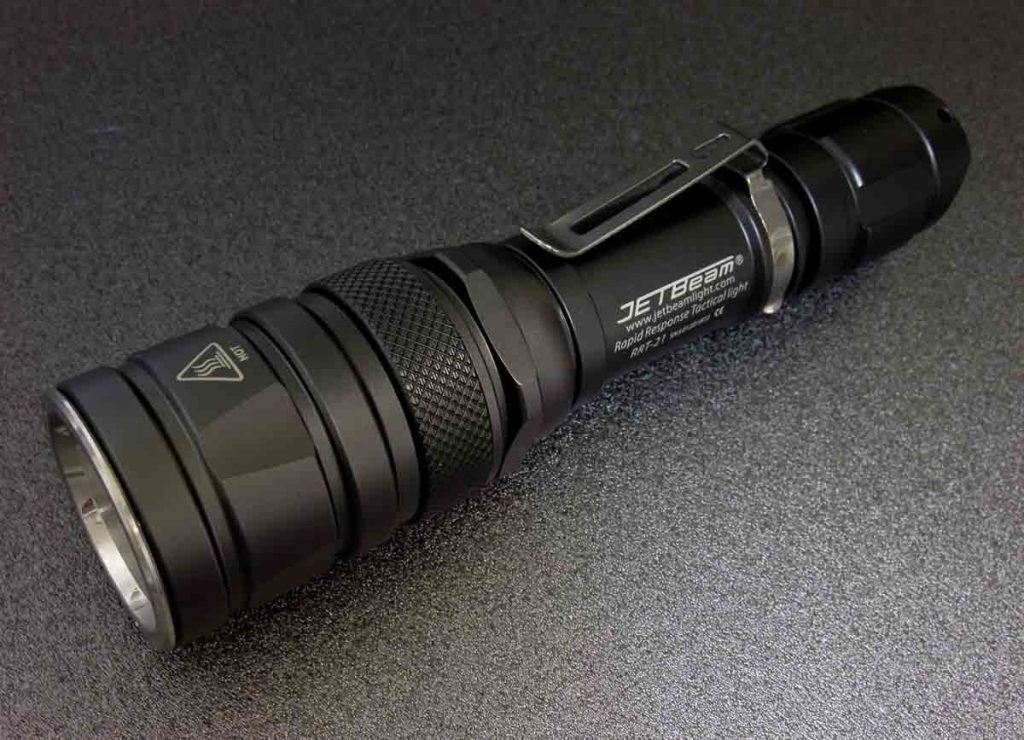
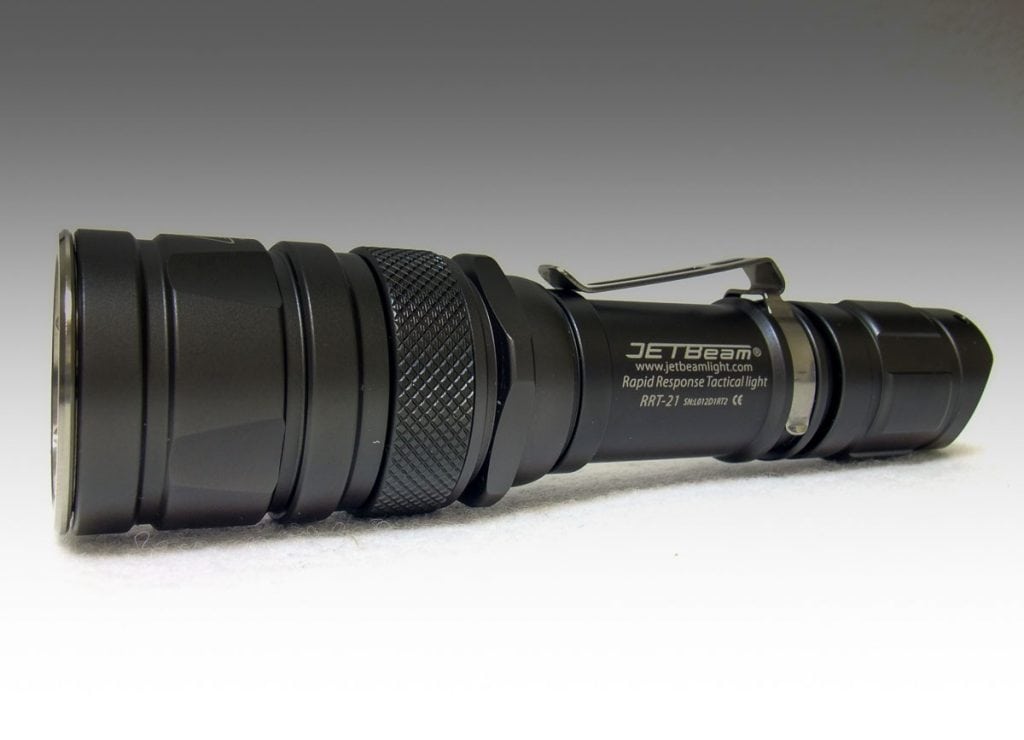
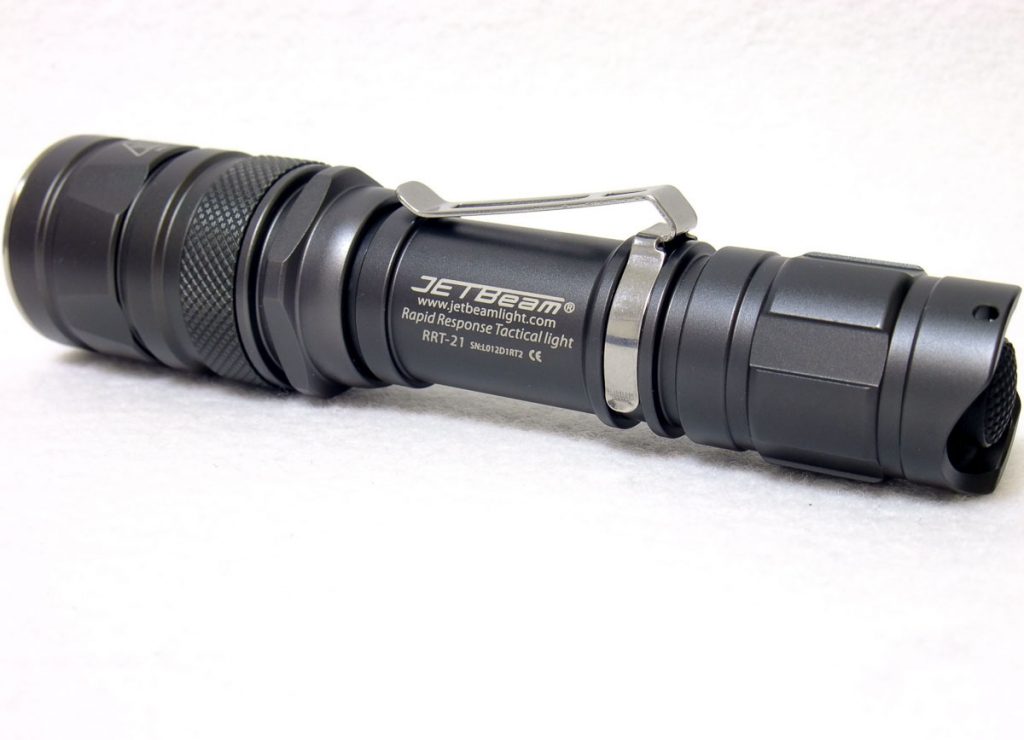
Lens LED and Reflector
The lens is UV coated, and hardened according to the included manual.
The Jetbeam has an OP reflector, and a XM-L LED. This is not a long thrower. The bezel of the RRT21 can be unscrewed with the Xeno Tw02 diffuser.
Unfortunately, the diffuser can’t be used as a diffuser on the Jetbeam.
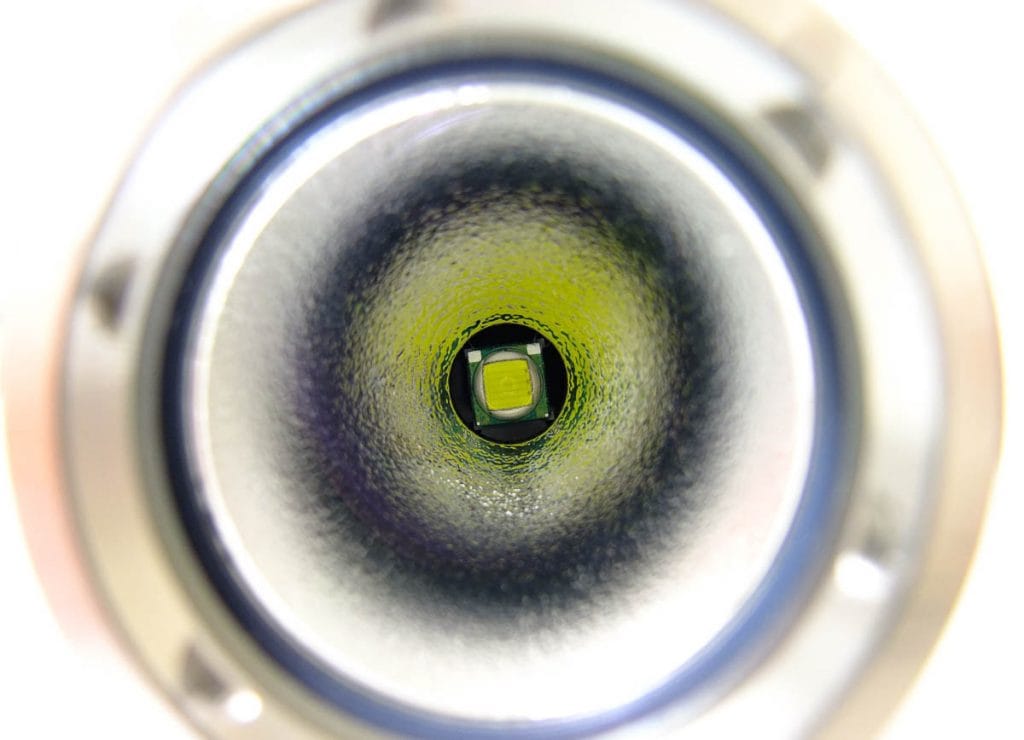
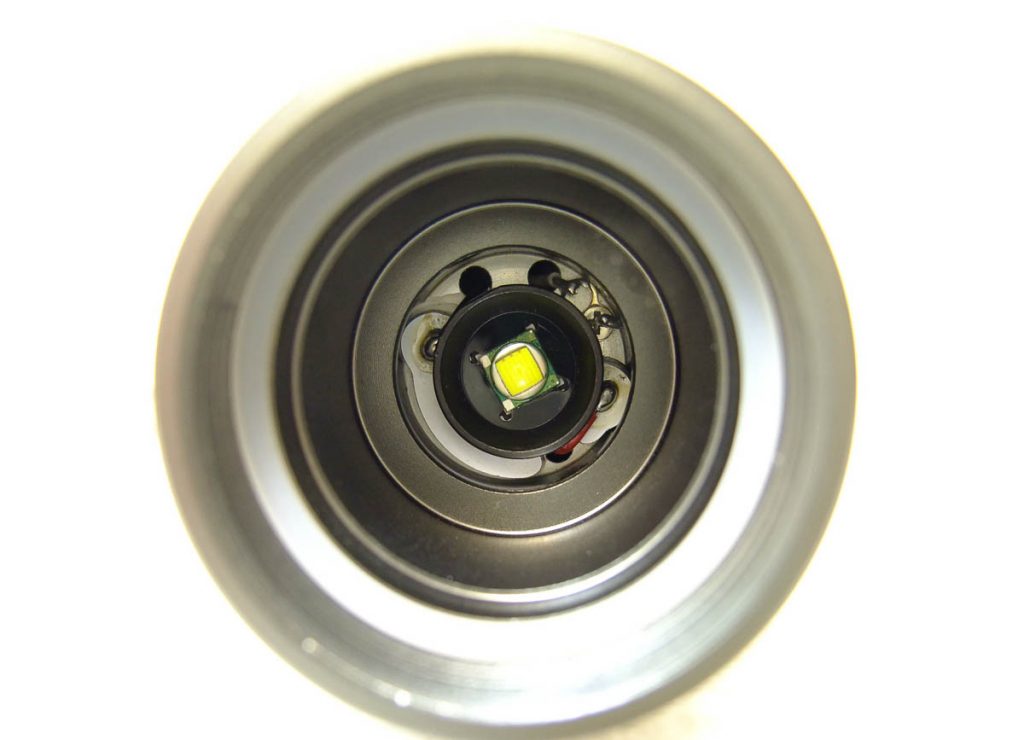
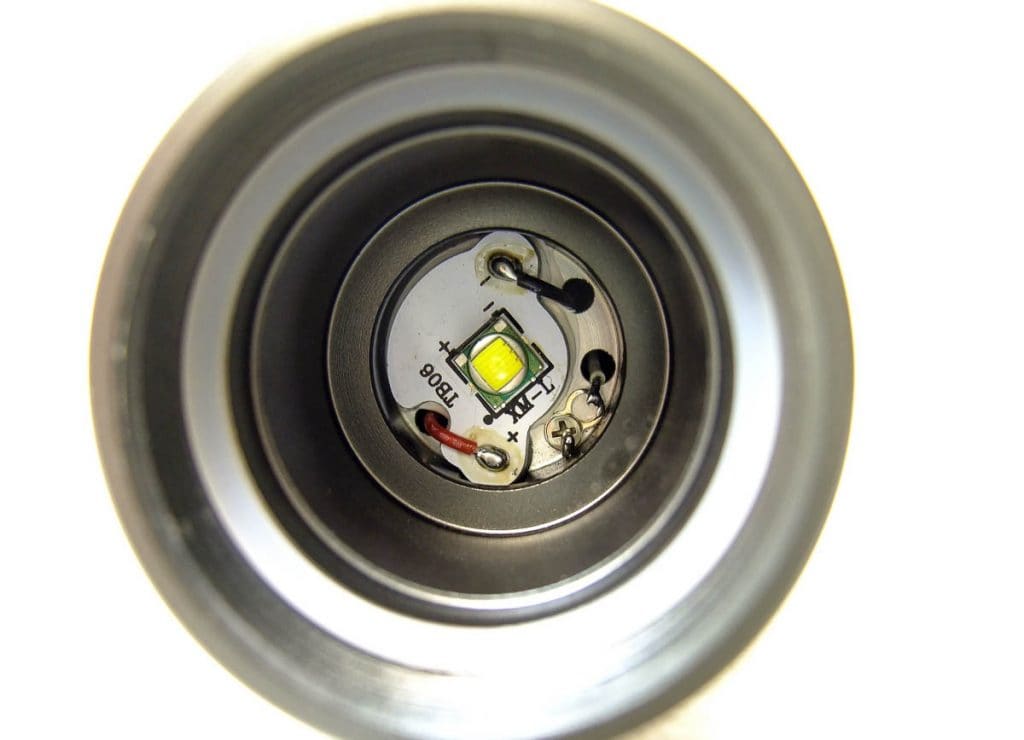
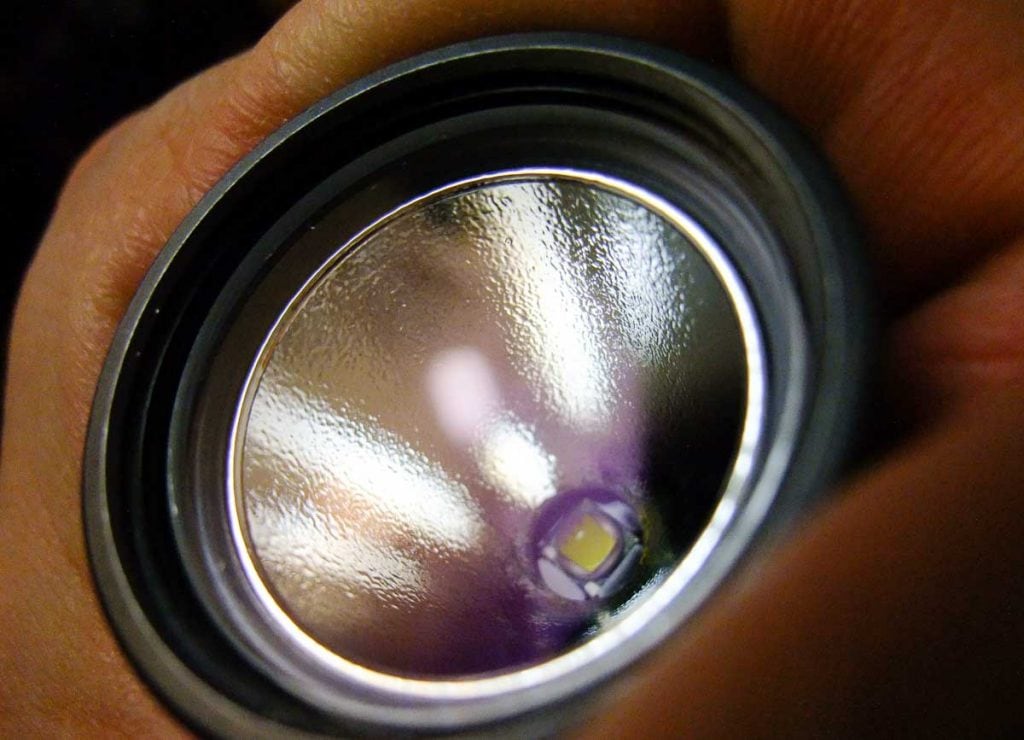
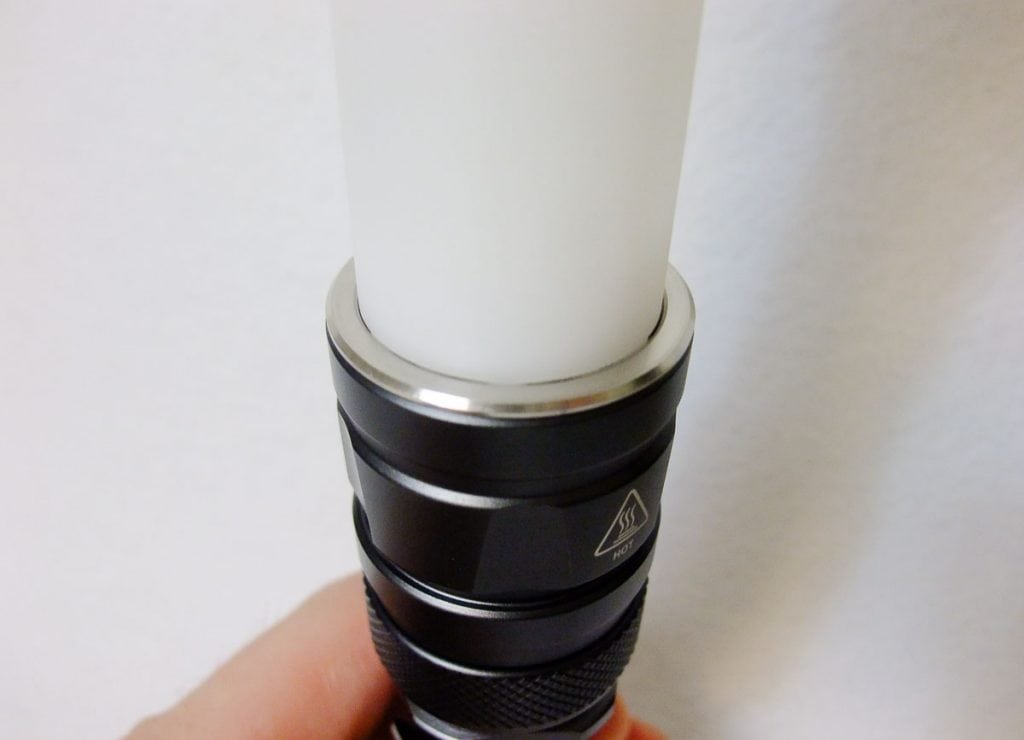
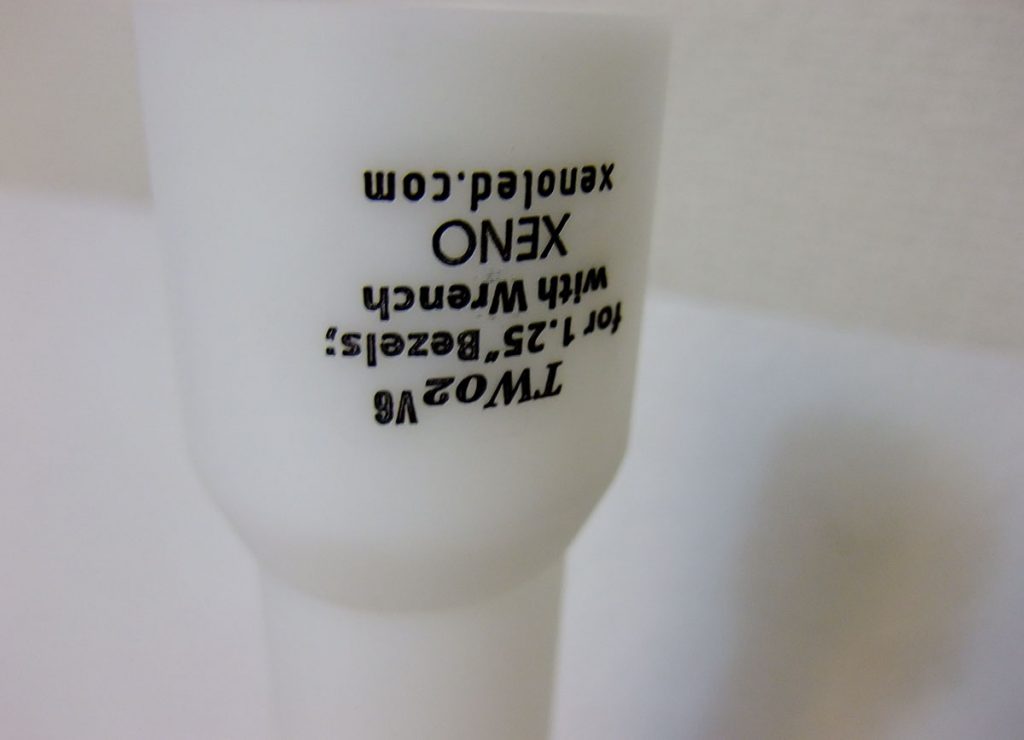
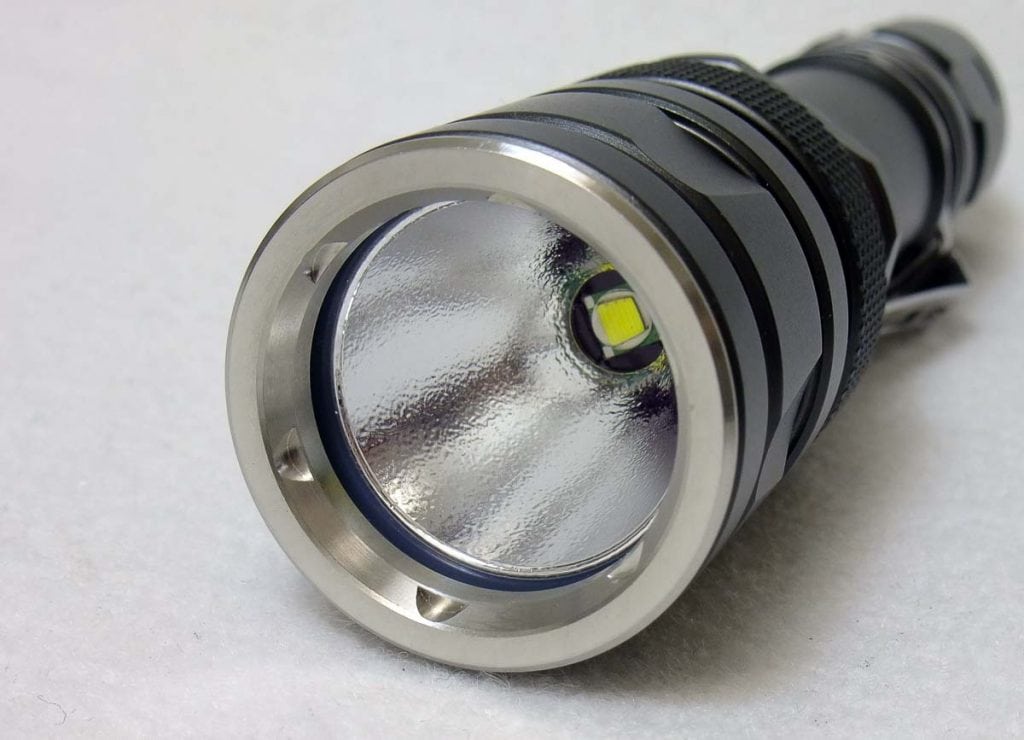
Threads
All the threads on the light were lubed when I received it. All threads are anodized so you could twist the body for a Lock Out.
The RRT21 can tailstand, but is not stable doing so. This is not recommended. Prints on the jebeam are done well. Nothing to complain about.
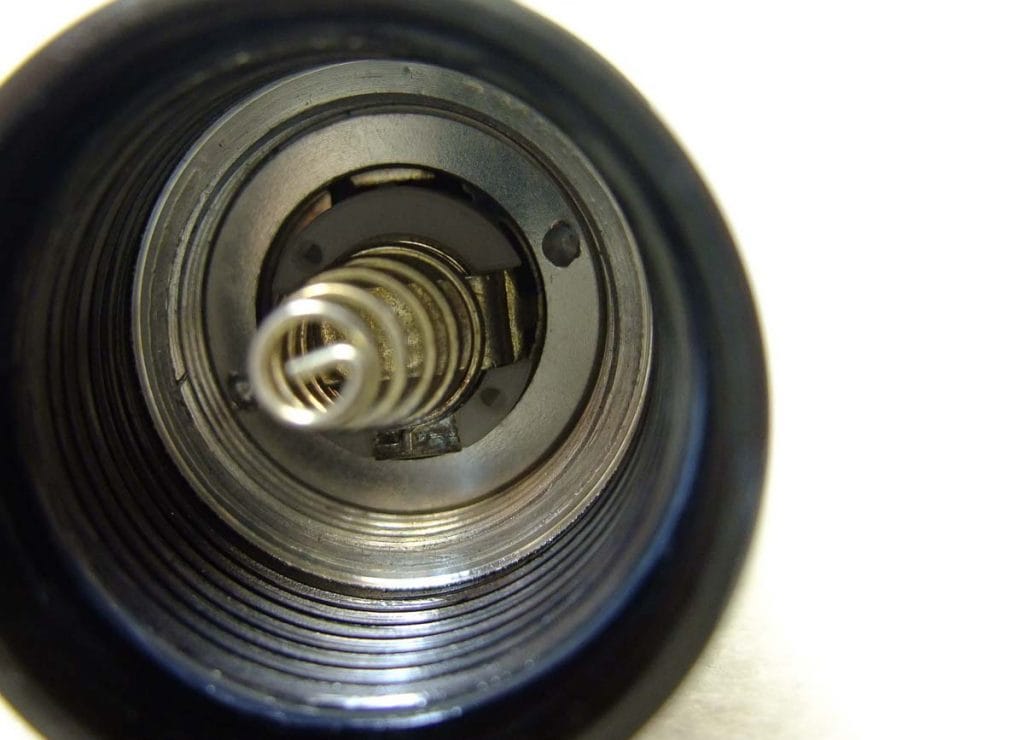
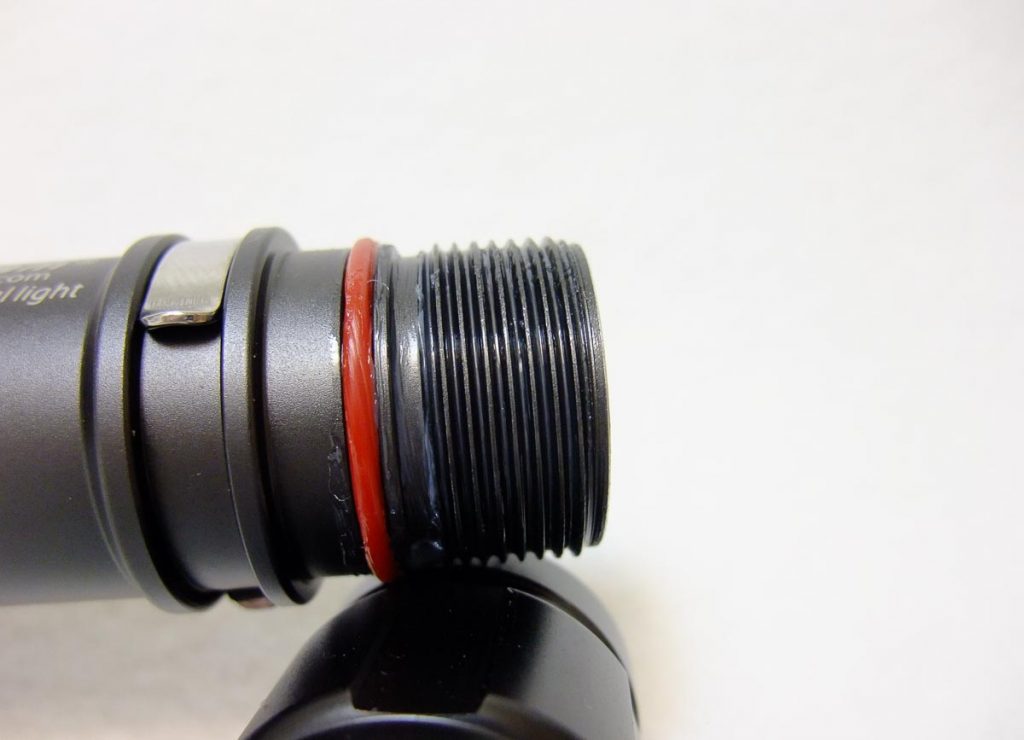
Dimensions and weight:
- Length: 140mm
- Head: 34mm
- Weight: 137grams
User interface
Because of the MCR this thing is fully variable!
Which means it can incres the output from 3 to 450 lumens in a smooth increase.
This was one reason for trying the Jetbeam RRT21.. Because I love my Sunwayman MCR lights.
This is how it works?
- It starts from a Stand-by position.
A positive aspect about the standby mode is that you are able to handle the light with only one hand. You can quickly switch to Strobe, Min and Max without changing the position of your hand! - Standby position…
Turn the ring the clock-wise, you”ll first feel a little bump, then you will start in Minimum output. (about 3 lumens)
When you turn the ring slowly, the brightness will increase until you reacht the end. You just can’t turn the ring any further.
From Max, you turn the ring Counter-Clock-Wise to decrease the output until you reach it`s standby mode again.
Notice: 1 downside of the Standby position is its high current draw
I measured about 0.2A in the Standby position.. that`s really too much for a flashlight in standby mode.
Therefore I advise to use the tail-cap switch or a lock-out to turn off the light.
Sunwayman V11R and V20C start off at a much lower output than the RRT21, which is a shame for the RRT21 imho.
The RRT21 starts at 3/5 lumens, which can be too bright. And it increases output quite rapidly.
Sunwayman MCR lights have a smoother transition from Min to Max, although still not perfect.
Tip! You can however decrese the output after moving the dial from Stand-by to low by slowly turning the ring counter clock wise again in the direction of the Standby.. this will decrese it a little bit.
The control ring moves in a 140 degrees circle from Off to High. I measured this by putting the light facing down on a piece of paper with a 360 degrees picture.
The measured output in % when turning the control ring.
From the point I started turning the dial, the light turned on at about 15 degrees.
Unfortunately the graph show some output between 10 and 15, but that is only because of the software, it automatically drew a line from 0 to the next level.
Check the graph to see that between there is a fast increase of brightness when the dial is turned only 20 degrees.
This isn`t 100% the way it increases, because the light slightly turned sometimes during the test..

SOS/Strobe?
Does it have SOS: Yes
Does it have Strobe: Yes
- How can you enter Strobe?
from the standby mode, just turn the dial counter clock wise. - How can you enter SOS mode?
In the Standby position, turn the MCR/dial back and forth for 3 times (between Min and Max within a second)Interesting fact: You can adjust the output of the SOS mode, by slowly turning the ring towardsMin. That is a very nice feature if you ever have to use SOS and want to exetnd the runtime of the battery.
PWM:
Nope, nothing to see.
Performance:
It’s tested with a fully charged NCR18650B battery. In the Highest output mode it started off at a measly 1.3Amps..
The PRO is that you can get a long runtime in max! If you are looking for a flashlight that drop jaws, you should look at the overview of currently available brightest flashlights. Or check out the other 18650 flashlight reviews.
Runtime:
The following graph has been taken in a time span of a mere 3 hours.
This light is not current regulate .and it will decrease output bit by bit.
This will help running the light longer at the expense of brightness.
Your eyes will not notice this decreasing output until it has become very weak.. Reminds of the old maglite times.
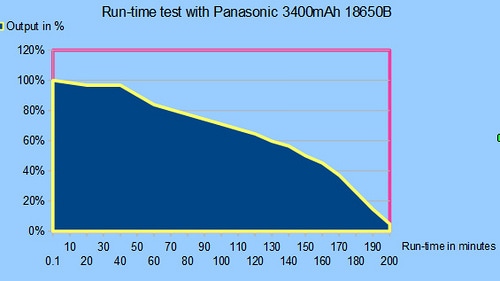
After 3 hours, it is at about 20%. This is roughly 100 lumens. Bright enough for indoor stuff.
The runtime was aborted at 10% output. The panasonic went down to 2.8V. I didnt stay the full 3 hours with the light, so between 40 and 60 minutes I didnt record the output!
Beam shots:
The beamshots are a comparison between the XinTd X3 with 3AA eneloops, the DQG 26650 3x XPG2 with a 26650 lithium battery, and the Sunwayman D40A with 4xAA eneloop PRO batteries. .
Fujifilm EXR200R M-mode f3.3 0.5Sec ISO400
2. Below: Jetbeam RRT21 Max output
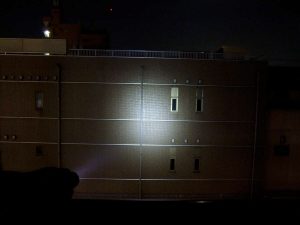
3. XinTd X3 XML2 T6 4C on highest setting
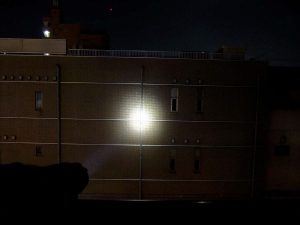
4. D.Q.G. 3x XPG2 NW High mode; supposedly around 500 lumens
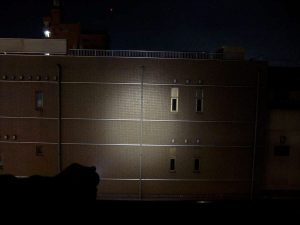
5. D.Q.G. 3x XPG2 NW Turbo mode

6. Sunwayman D40A on Turbo
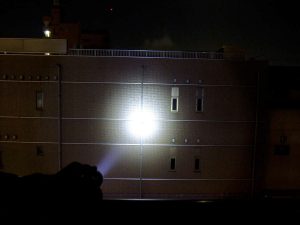
Overall conclusion Jetbeam RRT21
Pros
- Very, very well machined
- Removable clip
- Can be used with 2x CR123 and 1x 18650
- Magnetic control ring
- Long run-time (up to 3 hours)
- Hidden SOS and Turbo modes
- Britghtness of SOS is adjustable
- Tailcap switch… (get rid of parasitic drain)
- Ability to lock-out
- Ability to change from Standby mode to Min, Strobe and Max almost instantly.
Cons
- A very high Parasitic drain in Standby mode
- LED is firt generation XML
- No knurling and therefore slippery
- No real moon-level output
- Not as bright as current gen XML2 lights
- Can’t do proper tail-stand
Not for sale anymore..
Looking for alternatives: Check out our 18650 flashlight reviews.